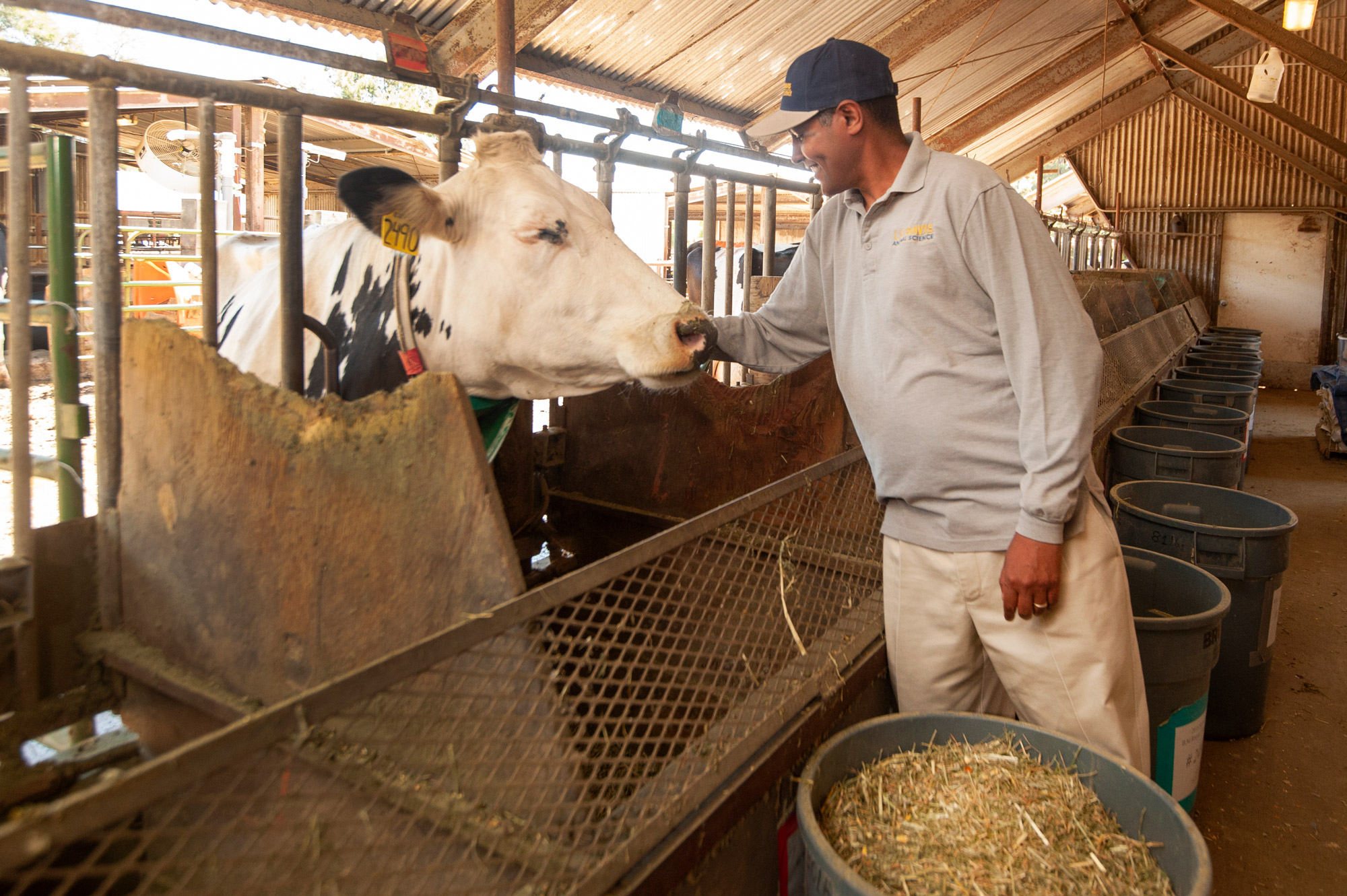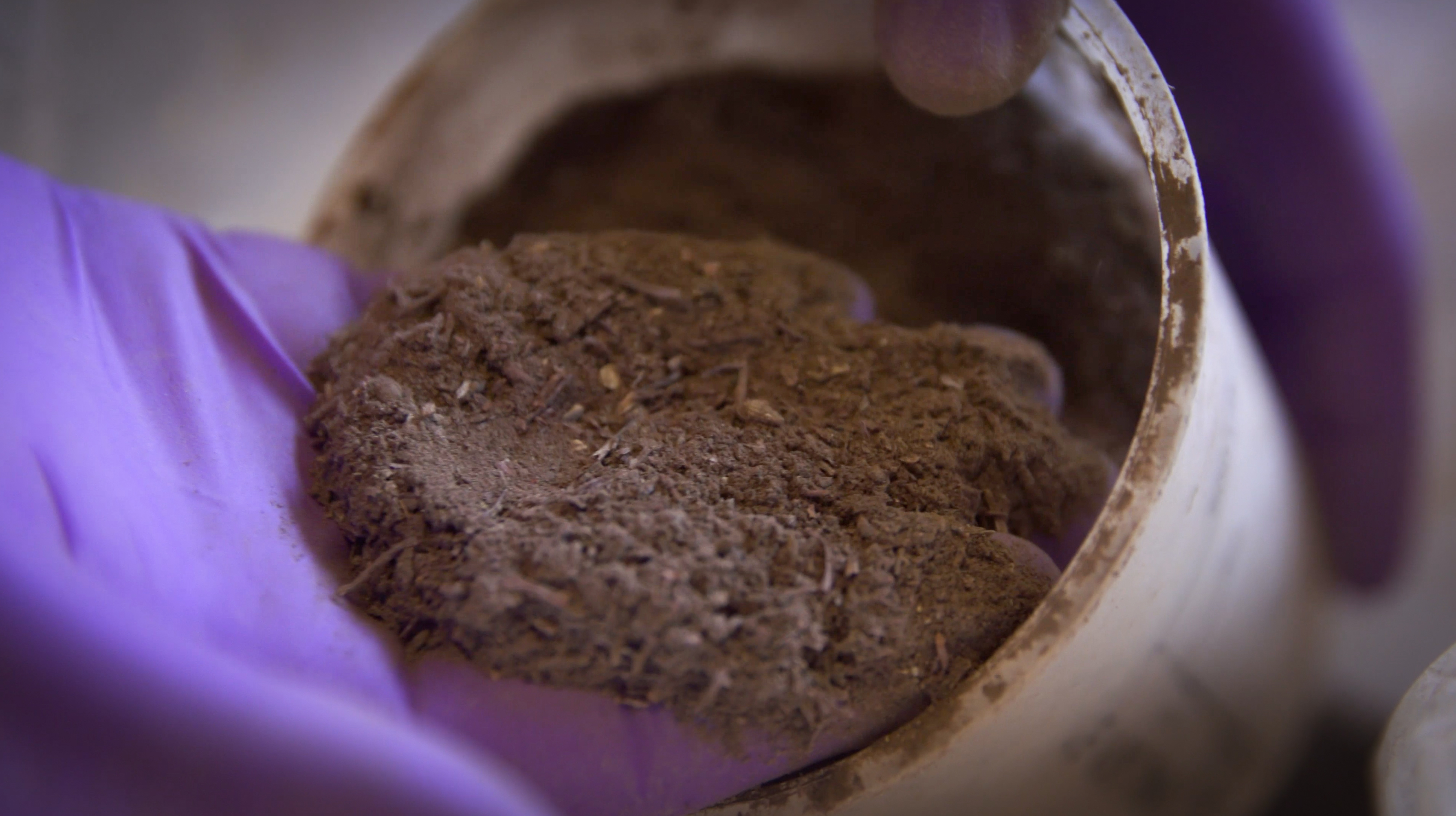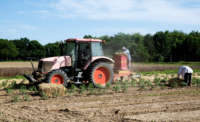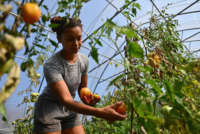Contingent on World Bank aid to be given to poorer countries in the wake of coronavirus lockdowns, agrifood conglomerates will aim to further expand their influence. These firms have been integral to the consolidation of a global food regime that has emerged in recent decades based on chemical- and proprietary-input-dependent agriculture which incurs massive externalised social, environmental and health costs.
Reliance on commodity monocropping for global markets, long supply chains and dependency on external inputs for cultivation make the food system vulnerable to shocks, whether resulting from public health scares, oil price spikes (the global food system is fossil-fuel dependent) or conflict and war. An increasing number of countries are recognising the need to respond by becoming more food self-sufficient, preferably by securing control over their own food and reducing supply chain lengths.
The various coronavirus lockdowns have disrupted many transport and production activities, exposing the weaknesses of the food system. If the current situation tells us anything, it is that structural solutions are needed to transform food production, not further strengthen the status quo.
Agroecology
During the Disappearing World Forum in 2013, author Arundhati Roy was asked by an audience member, what is the alternative to the mainstream development narrative?
She responded by saying:
You can ask the question of alternatives in two ways. One way is a genuine way and the other is a sort of aggressive way. And the genuine way would take into account that today we are where we are because there has been a series of decisions taken about everything; whether it’s about hybrid seeds, whether it’s about big dams. Whatever it’s about, every time there’s a decision that has been taken, there’s always been an alternative… There was an alternative to every way you chose to develop. When you have a system that’s been created with a layer – with thousands of decisions – and you want me now to tell you an alternative in one sentence, it isn’t possible.
In a world where the ‘good life’ is associated with GDP growth, endless consumption and increasing urbanisation, there is a price to be paid in terms of environmental destruction, devastating resource conflicts, population displacements, a destructive arrogance that sees humans apart from and above nature and the degradation of our most fundamental need – food and our ability to produce it.
The solution cannot be expressed in one sentence, but a vital – perhaps central – component of ‘the alternative’ involves prioritising an agrarian-centric development paradigm based on a wide-ranging shift to agroecology. The agroecological paradigm is not just about growing food; it involves reimagining our relationship with nature and with each other and the type of actions and activities that give meaning to life.
In 2014, UN special rapporteur Olivier De Schutter’s report concluded that by applying agroecological principles to democratically controlled agricultural systems we can help to put an end to food crises and poverty challenges. He argued that agroecological approaches could tackle food needs in critical regions and could double food production in 10 years.
The 2009 IAASTD peer-reviewed report, produced by 400 scientists and supported by 60 countries, recommended agroecology to maintain and increase the productivity of global agriculture. And the recent UN FAO High Level Panel of Experts concluded that agroecology provides greatly improved food security and nutritional, gender, environmental and yield benefits compared to industrial agriculture.
Agroecology is based on traditional knowledge and modern agricultural research, utilising elements of contemporary ecology, soil biology and the biological control of pests. This system employs sound ecological management by using on-farm solutions to manage pests and disease without the use of agrochemicals and corporate seeds. It outperforms the prevailing industrial food system in terms of diversity of food output, nutrition per acre, soil health, water table stability and climate resilience.
Academic Raj Patel outlines some of the basic practices of agroecology by saying that nitrogen-fixing beans are grown instead of using inorganic fertilizer, flowers are used to attract beneficial insects to manage pests and weeds are crowded out with more intensive planting. The result is a sophisticated polyculture: many crops are produced simultaneously, instead of just one.
Much has been written about agroecology, its successes and the challenges it faces, not least in the 2017 book Fertile Ground: Scaling agroecology from the ground up, published by Food First. Agroecology can offer concrete, practical solutions to many of the world’s problems. It challenges – and offers alternatives to – the prevailing moribund doctrinaire economics of a neoliberalism that drives a failing system of industrial agriculture.
By creating securely paid labour-intensive agricultural work in both richer and poorer countries, it can address the interrelated links between labour offshoring by rich countries and the removal of rural populations elsewhere who end up in sweat shops to carry out offshored jobs: the two-pronged process of neoliberal, globalised capitalism that has hollowed out the economies of the US and UK and which is displacing existing indigenous food production systems and undermining the rural infrastructure in places like India.
Agroecology is based on food sovereignty, which encompasses the right to healthy and culturally appropriate food and the right of people to define their own food and agriculture systems. ‘Culturally appropriate’ is a nod to the foods people have traditionally produced and eaten as well as the associated socially embedded practices which underpin community and a sense of communality. But it goes beyond that.
Modern food system
People have a deep microbiological connection to soils, food processing practices and fermentation processes which affect the gut microbiome – up to six pounds of bacteria, viruses and microbes akin to human soil. And as with actual soil, the microbiome can become degraded according to what we ingest (or fail to ingest). Many nerve endings from major organs are located in the gut and the microbiome effectively nourishes them. There is ongoing research taking place into how the microbiome is disrupted by the modern globalised food production/processing system and the chemical bombardment it is subjected to.
Capitalism colonises (and degrades) all aspects of life but is colonising the very essence of our being – even on a physiological level. With their agrochemicals and food additives, powerful companies are attacking this ‘soil’ and with it the human body. As soon as agri-food corporations undermined the capacity for eating locally grown, traditionally processed food, cultivated in healthy soils and began imposing long-line supply chains and food subjected to chemical-laden cultivation and processing activities, we not only lost our cultural connections to food production and the seasons, but we also lost our deep-rooted microbiological connection with our localities. Corporate chemicals and seeds and global food chains dominated by the likes of Monsanto (now Bayer), Nestle and Cargill took over.
Aside from affecting the functioning of major organs, neurotransmitters in the gut affect our moods and thinking. Alterations in the composition of the gut microbiome have been implicated in a wide range of neurological and psychiatric conditions, including autism, chronic pain, depression and Parkinson’s Disease. In addition, increasing levels of obesity are associated with low bacterial richness in the gut. Indeed, it has been noted that tribes not exposed to the modern food system have richer microbiomes.
To ensure genuine food security and good health, humanity must transition to a notion of food sovereignty based on optimal self-sufficiency, agroecological principles and local ownership and stewardship of common resources – land, water, soil, seeds, etc.
However, what we are seeing is a trend towards genetically engineered and biosynthetic lab-based food controlled by corporations. The billionaire class who are pushing this agenda think they can own nature and all humans and can control both. As part of an economic, cultural and social ‘great reset’, they seek to impose their cold dystopian vision that wants to eradicate thousands of years of culture, tradition and farming practices virtually overnight.
Consider that many of the ancient rituals and celebrations of our forebears were built around stories and myths that helped them come to terms with some of the most basic issues of existence, from death to rebirth and fertility. These culturally embedded beliefs and practices served to sanctify their practical relationship with nature and its role in sustaining human life.
As agriculture became key to human survival, the planting and harvesting of crops and other seasonal activities associated with food production were central to these customs. Freyfaxi marks the beginning of the harvest in Norse paganism, for example, while Lammas or Lughnasadh is the celebration of the first harvest/grain harvest in Paganism.
Humans celebrated nature and the life it gave birth to. Ancient beliefs and rituals were imbued with hope and renewal and people had a necessary and immediate relationship with the sun, seeds, animals, wind, fire, soil and rain and the changing seasons that nourished and brought life. In addition to our physiological connection, our cultural and social relationships with agrarian production and associated deities had a sound practical base.
We need look no further than India to appreciate the important relationship between culture, agriculture and ecology, not least the vital importance of the monsoon and seasonal planting and harvesting. Rural-based beliefs and rituals steeped in nature persist, even among urban Indians. These are bound to traditional knowledge systems where livelihoods, the seasons, food, cooking, processing, seed exchange, healthcare and the passing on of knowledge are all inter-related and form the essence of cultural diversity within India itself.
Although the industrial age resulted in a diminution of the connection between food and the natural environment as people moved to cities, traditional ‘food cultures’ – the practices, attitudes and beliefs surrounding the production, distribution and consumption of food – still thrive and highlight our ongoing connection to agriculture and nature.
If we go back to the 1950s, it is interesting to note Union Carbide’s corporate narrative based on a series of images that depicted the company as a ‘hand of god’ coming out of the sky to ‘solve’ some of the issues facing humanity. One of the most famous images is of the hand pouring the firm’s agrochemicals on Indian soils as if traditional farming practices were somehow ‘backward’.
Despite well-publicised claims to the contrary, this chemical-driven approach did not lead to higher food production according to the paper “New Histories of the Green Revolution” written by Prof Glenn Stone. However, it has had long-term devastating ecological, social and economic consequences as we saw in Vandana Shiva’s book The Violence of the Green Revolution and Bhaskar Save’s now famous and highly insightful open letter to Indian officials.
In the book Food and Cultural Studies’ (Bob Ashley et al), we see how, some years ago, a Coca Cola TV ad campaign sold its product to an audience which associated modernity with a sugary drink and depicted ancient Aboriginal beliefs as harmful, ignorant and outdated. Coke and not rain became the giver of life to the parched. This type of ideology forms part of a wider strategy to discredit traditional cultures and portray them as being deficient and in need of assistance from ‘god-like’ corporations.
Post-COVID plunder
What we are seeing in 2020, is an acceleration of such processes. In terms of food and agriculture, traditional farming in places like India will be under increasing pressure from the big-tech giants and agribusiness to open up to lab-grown food, GMOs, genetically engineered soil microbes, data harvesting tools and drones and other ‘disruptive’ technologies.
This vision includes farmerless farms being manned by driverless machines, monitored by drones and doused with chemicals to produce commodity crops from patented GM seeds for industrial ‘biomatter’ to be processed and constituted into something resembling food. What will happen to the farmers?
Post-COVID, the World Bank talks about helping countries get back on track in return for structural reforms. Are tens of millions of smallholder farmers to be enticed from their land in return for individual debt relief and universal basic income? The displacement of these farmers and the subsequent destruction of rural communities and their cultures was something the Gates Foundation once called for and cynically termed “land mobility”.
Cut through the euphemisms and it is clear that Bill Gates – and the other incredibly rich individuals behind the great reset with their ‘white saviour’ mindset – is an old-fashioned colonialist who supports the time-honoured dispossessive strategies of imperialism, whether this involves mining, appropriating and commodifying farmer knowledge, accelerating the transfer of research and seeds to corporations or facilitating intellectual property piracy and seed monopolies created through IP laws and seed regulations.
In India – still an agrarian-based society – will the land of these already (prior to COVID) heavily indebted farmers then be handed over to the tech giants, the financial institutions and global agribusiness to churn out their high-tech industrial sludge?
With the link completely severed between food production, nature and culturally embedded beliefs that give meaning and expression to life, we will be left with the individual, isolated human who exists on lab-based food, who is reliant on income from the state and who is stripped of satisfying productive endeavour and genuine self-fulfilment.
Technocratic meddling has already destroyed or undermined cultural diversity, meaningful social connections and agrarian ecosystems that draw on centuries of traditional knowledge and are increasingly recognised as valid approaches to secure food security, as outlined, for example, in the 2017 article “Food Security and Traditional Knowledge in India” in the Journal of South Asian Studies.
Such a pity that prominent commentators like George Monbiot, who writes for the UK’s Guardian newspaper, seems fully on board with this ‘great reset’. In his 2020 article ‘Lab-grown food will soon destroy farming – and save the planet’, he sees farmerless farms and ‘fake’ food produced in giant industrial factories from microbes as a good thing.
But Vandana Shiva says:
The notion that high-tech ‘farm free’ lab food will save the planet is simply a continuation of the same mechanistic mindset which has brought us to where we are today – the idea that we are separate from and outside of nature… it is the basis of industrial agriculture which has destroyed the planet, farmers livelihoods and our health.
She adds:
Turning ‘water into food’ is an echo from the times of the second world war, when it was claimed that fossil-fuel-based chemical fertilisers would produce ‘Bread from Air’. Instead we have dead zones in the ocean, greenhouse gases – including nitrous oxide which is 300 times more damaging to the environment than CO2 – and desertified soils and land. We are part of nature, not separate from and outside of nature. Food is what connects us to the earth, its diverse beings, including the forests around us — through the trillions of microorganisms that are in our gut microbiome and which keep our bodies healthy, both inside and out.
As an environmentalist, Monbiot supports lab-based food because he only sees a distorted method of industrial farming; he is blind to agroecological methods which do not have the disastrous environmental consequences of chemical-dependent industrial agriculture. Monbiot’s ‘solution’ is to replace one model of corporate controlled farming with another, thereby robbing us of our connection to the land, to each other and making us wholly dependent on profiteering, unscrupulous interests that have no time for concepts like food democracy or food sovereignty.
Moreover, certain lab-engineered ‘food’ will require biomatter in the form of commodity crops. This in itself raises issues related to the colonisation of land in faraway countries and the implications for food security there. We may look no further to see the adverse health, social and environmental impacts of pesticide-dependent GMO seed monocropping in Argentina as it produces soy for the global market, not least for animal feed in Europe.
Instead of pandering to the needs of corporations, prominent commentators would do better by getting behind initiatives like the anti-imperialist Declaration of the International Forum for Agroecology, produced by Nyeleni in 2015. It argues for building grass-root local food systems that create new rural-urban links, based on genuine agroecological food production. It adds that agroecology requires local producers and communities to challenge and transform structures of power in society, not least by putting the control of seeds, biodiversity, land and territories, waters, knowledge, culture and the commons in the hands of those who feed the world.
It would mean that what ends up in our food and how it is grown is determined by the public good and not powerful private interests driven by patents, control and commercial gain and the compulsion to subjugate farmers, consumers and entire regions to their global supply chains and questionable products (whether unhealthy food or proprietary pesticides and seeds). For consumers, the public good includes more diverse diets leading to better nutrition and enhanced immunity when faced with any future pandemic.
Across the world, decentralised and local community-owned food systems based on short(er) food supply chains that can cope with future shocks are now needed more than ever. But there are major obstacles given the power of agrifood concerns whose business models are based on industrial farming and global chains with all the devastating consequences this entails.
Following the devastation caused by coronavirus-related lockdowns, World Bank Group President David Malpass has stated that poorer countries will be ‘helped’ to get back on their feet – on the condition that further neoliberal reforms and the undermining of public services are implemented and become further embedded.
He says that countries will need to implement structural reforms to help shorten the time to recovery and create confidence that the recovery can be strong:
For those countries that have excessive regulations, subsidies, licensing regimes, trade protection or litigiousness as obstacles, we will work with them to foster markets, choice and faster growth prospects during the recovery.
For agriculture, this means the further opening of markets to benefit the richer nations. What journalists like George Monbiot fail to acknowledge is that emerging technology in agriculture (AI drones, gene-edited crops, synthetic food, etc) is first and foremost an instrument of corporate power. Indeed, agriculture has for a long time been central to US foreign policy to boost the bottom line of its agribusiness interests and their control over the global food chain.
In the words of economics professor Michael Hudson:
It is by agriculture and control of the food supply that American diplomacy has been able to control most of the Third World. The World Bank’s geopolitical lending strategy has been to turn countries into food deficit areas by convincing them to grow cash crops – plantation export crops – not to feed themselves with their own food crops.
It is naïve to suggest that in the brave new world of farmerless farms and lab-based food, things would be different. In the face of economic crisis and stagnation at home, exacerbated by COVID lockdowns and restrictions, whether through new technologies or older Green Revolution methods, Western agricapital will seek to further entrench its position across the globe.
This article was posted on Thursday, January 14th, 2021 at 6:15pm and is filed under Agriculture, Agrochemicals, Agroecology, COVID-19, Ecology, Ecosystems, Farmers, Food Security, Food Sovereignty, Food/Nutrition, GMO, India, Industrial Farming, Lockdown, Monsanto (now Bayer), World Bank.
This post was originally published on Radio Free.








